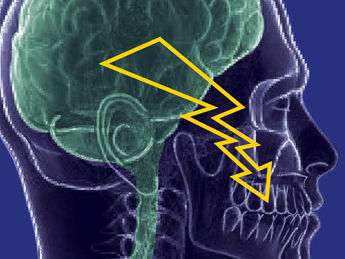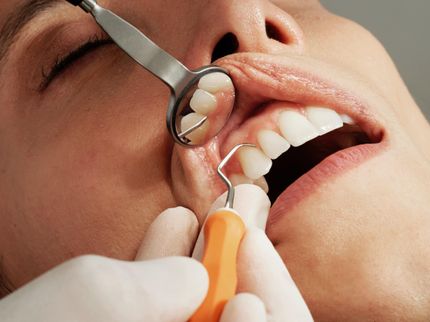Prospect for more effective treatment of nerve pain
Trigeminal neuralgia: A glimmer of hope for patients – thanks to a newly tested substance
trigeminal neuralgia is characterized by sharp, lancinating pain in the teeth or facial area. The standard treatment for this chronic nerve pain can cause burdening side effects. A novel substance inhibits the pain effectively and is well tolerated, as documented by the initial results of an international study involving the Center of Dental Medicine at the University of Zurich.

A novel substance inhibits the pain effectively and is well tolerated.
Center of Dental Medicine; UZH
The sharp pain shoots to the face or teeth and seriously torments patients. Known as trigeminal neuralgia, it is one of the worst chronic nerve pains. The bouts are triggered by touch, such as shaving, putting on make-up, showering, talking and tooth brushing, or even a gust of wind. The cause is usually an irritation of the trigeminal nerve, the cranial nerve responsible for the sensory innervation of the facial area, parts of the scalp, and the oral cavity.
However, there is now a glimmer of hope for patients: Thanks to a newly tested substance, the pain can be reduced to a tolerable level, as indicated by the promising results of an international phase II study involving the Center of Dental Medicine at the University of Zurich.
Less burdening side effects
Pain signals reach the brain via the activation of sodium channels located in the membranes of nerve cells. The sodium channel “1.7” is frequently expressed on pain-conducting nerves and higher pain intensity is linked to higher channel activity. Blocking this sodium channel – e.g. by a local anesthetic – inhibits the pain. In trigeminal neuralgia, the nerve damage is presumed to be at the base of the skull. However, this region is hard to reach by local injections and therefore requires drug treatment.
The novel substance BIIB074 which was tested in this phase II study inhibits the sodium channel 1.7 state-dependent, meaning: The more active this sodium channel gets, the stronger it is blocked by BIIB074. By contrast, currently available medications block the sodium channel 1.7 irrespective of the nerve activity, which commonly results in burdening side effects. “Unlike conventional drugs, which often cause tiredness and concentration problems, BIIB074 was not only effective; but also very well tolerated,” explains Dominik Ettlin, a dental specialist from UZH. “We will now test the new substance in a lot more subjects during the next study phase, which will reveal whether the new hope for more effective pain relief is justified,” he concludes.
Original publication
Joanna Zakrzewska et al.; "Safety and efficacy of a Nav1.7 selective sodium channel blocker in trigeminal neuralgia: a double-blind, placebo-controlled, randomised withdrawal phase 2a trial"; The Lancet Neurology; February 16, 2017.
Most read news
Original publication
Joanna Zakrzewska et al.; "Safety and efficacy of a Nav1.7 selective sodium channel blocker in trigeminal neuralgia: a double-blind, placebo-controlled, randomised withdrawal phase 2a trial"; The Lancet Neurology; February 16, 2017.
Organizations
Other news from the department science

Get the life science industry in your inbox
By submitting this form you agree that LUMITOS AG will send you the newsletter(s) selected above by email. Your data will not be passed on to third parties. Your data will be stored and processed in accordance with our data protection regulations. LUMITOS may contact you by email for the purpose of advertising or market and opinion surveys. You can revoke your consent at any time without giving reasons to LUMITOS AG, Ernst-Augustin-Str. 2, 12489 Berlin, Germany or by e-mail at revoke@lumitos.com with effect for the future. In addition, each email contains a link to unsubscribe from the corresponding newsletter.
Most read news
More news from our other portals
Last viewed contents

Smartphone lab finds coronavirus in saliva - Diagnosis of other infectious diseases possible

Analytica: Significant upswing in international spin-offs - Country-specific challenges






















































